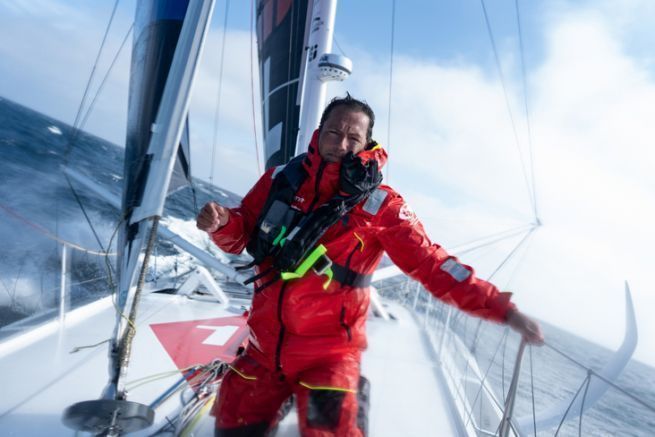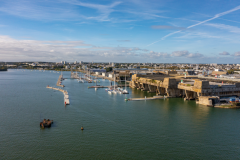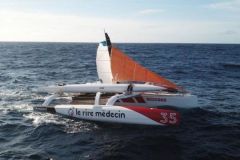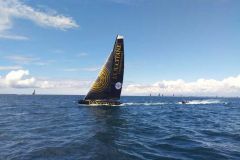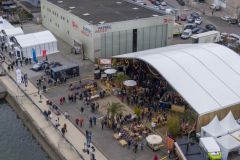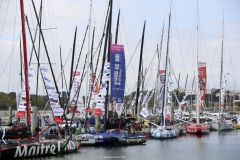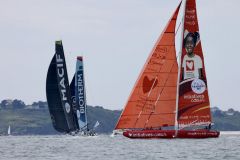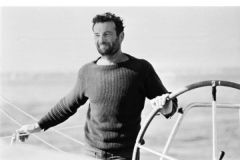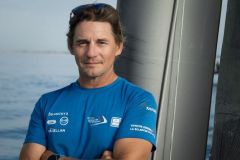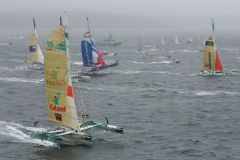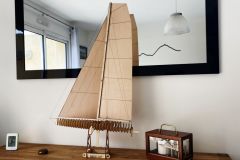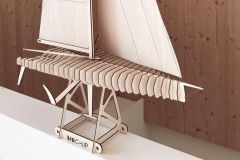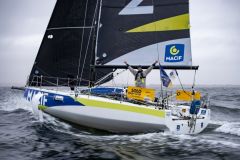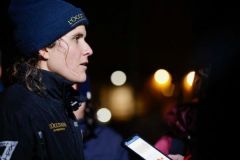A few days before the start of the Transat Jacques Vabre, Romain Attanasio talks about the event and his new boat.
With less than a month to go, what is your state of mind?
That's the question we're asking ourselves too. This new boat has been a huge discovery. It's a big challenge. It has nothing to do with what I knew before. Pure Best Western was a high-performance daggerboard boat, a fine IMOCA. This is a step up.
We sailed as much as we could. There was also a big refit of the boat, since it collided at the finish of the Vendée Globe 2020. We only got the second foil on June 10th, but we still sailed with the only port foil. And I also sailed a lot with Seb, my co-skipper. We have sailed a lot since we got the boat. We still have things to learn, but we have made good progress.
What are your ambitions in this Transat Jacques Vabre now that you have a hydrofoil boat?
It's very difficult to set ambitions. We're going to give it our best shot. What we want and what we are trying to do is to play with the leading group, which I have never been able to reach before.
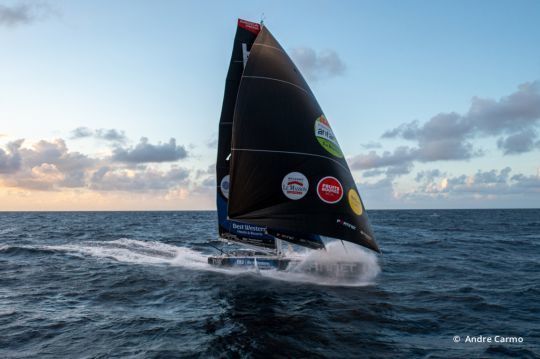
Can you tell us about your boat (ex-Malizia II) and your preparation? What is your assessment of your sailing on board since you took it in hand last spring?
We are much more comfortable. At the beginning we were impressed all the time. Today, we are only impressed sometimes (Laughs). We have a better vision of what a foiler is. It's such a different feeling. When he flies on his foil, the whole front takes off, the back touches the water because there is no load-bearing surface on the rudder. But he still ends up taking off before he lands on the rudder. It feels like you're getting high on the way down. In the dark at 25/30 knots, it's really impressive!
We live more on our knees, it's harder to hold on. It's much less comfortable than my old IMOCA. Life on board is more complicated. We pull more on the boat, so there are more shocks. With my old boat, when it was banging around like that, I'd been cutting back for a while. This is normal.
In terms of trimming, there are a lot of loads. An IMOCA boat goes down when it's over-roofed. On my new boat, there are load sensors everywhere: props, runners, outrigger pulls... There are fiber optics in the foils to know their limits. When you first arrive on board, you discover a dial with 16 numbers. We don't understand anything at first. Everything is very impressive: the electronics, the pilots who are much more technological, Oscar (editor's note: a device capable of detecting UFOs) which we use a lot, because we can see less in front of us, the alarms, AIS, radars... Everything is on all the time. It creates an atmosphere, associated with the speed of the boat, which is very brutal.
It's a crazy chance! There are 15 boats like this in the world! It's really great. I realize how lucky I am. I've done a lot of Figaros, I sailed on the Penguin in 2016, for my first Vendée Globe, then on Pure Best Western, a boat from 2008. To arrive here today is an exceptional opportunity! I dreamed about it and I wouldn't have bet much on it happening. In addition, when I returned from the Vendée Globe, I was renewing my contract with the sponsors. And I was able to buy this boat in co-ownership with a former sponsor. I also found a new sponsor, Fortinet.

What did the last construction site consist of?
It was more of a refit, as the boat was repaired by Boris Hermann after the Vendée Globe. He had already done a lot of optimization work before the race: rake, new foils, new pilot, hull, even the sails. We'll start like this in the Transat Jacques Vabre, it's impossible to make changes to something we don't know.
We're nearing the end of the discovery process to get to the top in the Jacques Vabre. Last week, we met with the boat's architects to discuss how the foils work. They were very happy to exchange. It's interesting in both directions.
Can you tell us about your co-skipper, Sébastien Marsset, and this choice?
I had quite a few requests from skippers who wanted to sail with me. But I wanted a second, to be accompanied and to discover this boat by using the time we had, with someone on a daily basis. Stewart, the boat's New Zealand boat captain and former member of Boris' team, stayed with us, but I really needed a co-skipper who was with us all the time. I also needed someone I could get along with. With Seb, we already did the Transat Jacques Vabre in 2019. It went well. We're getting to know each other. We know how each other works. There are some missions that I can entrust to him entirely, like the electronics for example.
I put together a team as I went along with Seb, Stewart and Marc Liardet, Michel Desjoyeaux's former boat captain. I wanted to be accompanied, to do a lot of sailing, to do things with the partners. We had to put the project back together, finance the boat, and welcome Fortinet. It's important to surround myself with competent people. On my old boat, I did everything, which I can no longer do today. I learned to delegate a lot, which I didn't know how to do before.
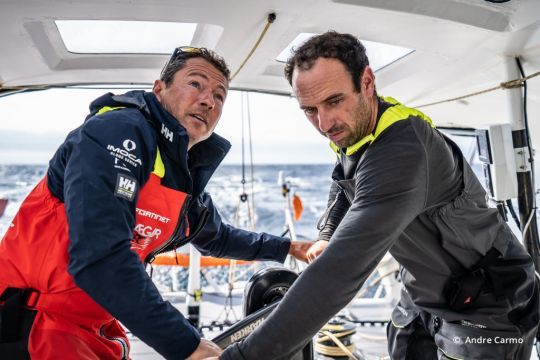
What are the constraints and advantages of a double-handed race format compared to solo racing?
There are many advantages and few constraints. It's better that we're in the double-handed year to discover this new boat. It would have been more difficult on a Route du Rhum. In 2022, it will be a solo year and it's a lot of work.
Being two on a boat is ten times easier! Taking out a sail, trimming... when you are alone, it takes 15 minutes, you have to winch. Double-handed, it takes 20 seconds!
On the sensations of discovery of the boat, it is also sharing to be two. It's always easier with two people. It changes the game. That's what I find in double-handed sailing this year.
What do you think of the new race courses? What will it change?
It's quite a change. We're going to have to sail with a VMG downwind, and so we'll have to gybe. We're also going to have some reaching - wind on the beam. But most of the race will be downwind and we'll have to manage that. It's going to be a lottery along the South American coast. I did the delivery trip back from the Transat Jacques Vabre with Louis Duc in 2015 and at that point we had a lot of sargassum, waste from the Amazon. We won't have to get into it.
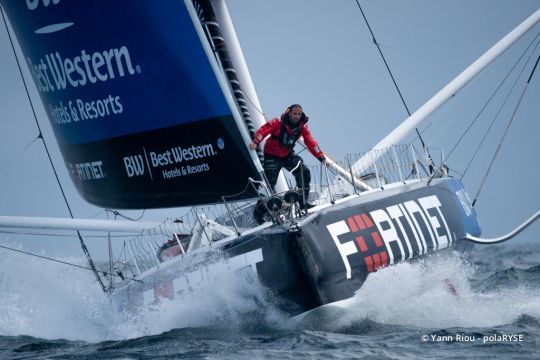
How do you feel about the competition, both in personal and material terms (boat)?
The best we can! We are more with the leading groups. We manage to be in the right pack. Before, on the daggerboard boats, we were always going well upwind. But afterwards, in the trade winds, downwind, it's a mess. Today, we have the latest generation of boats and we put a lot of boats behind. There is more of a match than before. It gives you wings. We'll see how it goes. No two transatlantic races are alike.
After the TJV, what are your projects ?
We were supposed to go to the United States for a trip for Fortinet, but with the Covid everything is cancelled. We're going to make the return trip in convoying mode and put the boat in the winter yard. It's going to be short since the first race of the season, the Bermuda 1000, leaves on May 8, 2022.
We're going to repaint the boat, and respray it completely. This will allow us to dismantle and check everything. It's a big job. The rules allow for more than 2° of rake and we could do that, but it's a big change, because you have to change all the cables. I think Boris had put in some great foils, but they're getting small. The gauge has been limited to 8 m 3 and ours must be 7 m 3 . But we won't do it now, maybe for the Transat Jacques Vabre 2023. Large foils are good for racing, but in the Vendée Globe, we realized that large foils are a bit hot in the deep south.
